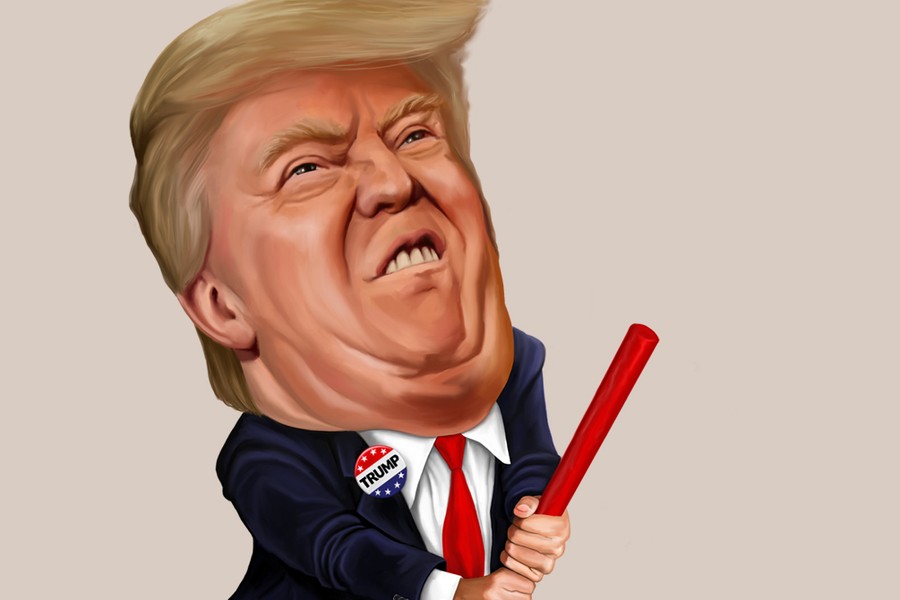To date, Trump has slapped a 25% tariffs on $50 billion worth of Chinese goods. He also mooted a 10% levy on an additional $200 billion of imports. China retaliated with tariffs on $50 billion of imports which prompted Trump to threaten tariffs on another $300 billion if China refused to back down. That would add-up to tariffs on $500 billion of Chinese exports.
So why is all this happening? The beneficiaries of a tariff are those industries who are allowed to either raise prices or displace foreign competitors, with the consumer typically bearing the cost. Does Trump really want to hurt the US consumer? That is clearly not the answer.
Benefits for Trump include the American perception that being tough on China is a vote winner. The official longer term aspiration is not just to block trade but to exert pressure on China, to open up its market access and to have greater, more robust and enforceable protections for US intellectual property. The effect of this will be to slow China’s technological development down.
In my mind there is another hidden agenda. I think Trump might be exploring ways to apply an effective brake to the US economy. This takes the negative control away from the Fed to some extent and allows Trump the ability to apply the brakes and then release them in the run-up to any election. It is usually only the Fed that has the use of the traditional brake; interest rate policy.
Trump might be exploring ways to apply an effective brake to the US economy.
The potential outcomes are broad in terms of scope, impact and severity. At one end of the scale, the world tips into a fully-fledged trade war with Europe, the US and China all retaliating against each other and spiralling into a recession with global GDP shrinking by 2.5% as a result.
My expectation is that the trade wars have taken more heat out of the US economy than people realise. US housebuilders should be increasing supply in light of house price increases. But they are not. I think this is an indication that big ticket items are being delayed. If this mentality pervades in corporate thinking then the US economy could slow down quicker than expected. Trump can't hold his strong negotiating position with a weakening economy behind him and that would prompt him to try and reverse out of his trade wars with some kind of publicity-worthy, but effectively irrelevant treaty; like agreeing to limit Chinese car imports to above their existing levels.
It is unlikely that tariffs will drive too much in ation into the US economy because imports only account for about 15% of American GDP. But there is the chance that the additional in ation could drive the Fed to be firmer on rates and flip the economy into recession. That would again leave Trump looking for a reverse gear.
The Chinese are very wary of social unrest and anything that looked likely to boost unemployment would be resisted.
You may have seen that Trump recently promised $12 billion in aid to placate farmers and offset the economic loss from lower demand for US agricultural products from China. If US sectors such as car manufacturers started to line up behind farmers, in terms of asking for compensation, you might well find that the weight of all their claims is another persuasive factor in terms of Trump looking for the reverse gear.
The Chinese may react to a drop in trade by trying to stimulate their economy. The Chinese are very wary of social unrest and anything that looked likely to boost unemployment would be resisted. If stimulation were to include lower interest rates and greater money supply from lower bank required reserve requirements (“RRR”) then that drives the renminbi lower. The renminbi has already fallen from CNY 6.3 per $1 to CNY6.9 since April. More monetary expansion would cause it to fall further, making Chinese goods even cheaper and going some way to counter-balance the effect of tariffs.
The 13% of UK exports that go to the US represent only 2% of our GDP.
So where does this leave us as investors? Shelter can probably be best found in the sectors that are unaffected by tariffs. This includes defence manufacturers as well as the service sector with financial services as a stand out choice.
In terms of the UK, we are caught by Trump’s tariffs on the EU’s steel and aluminium. Luckily for us, our £1 billion of metal exports to the US represent less than 0.1% of our GDP. Trump has threatened to extend the tariffs out to cars and take the rate from 2.5% to 20%. That would hurt our £7 billion of automotive exports and shave 0.2% off GDP.
Although the EU responded with tariffs on $3.2 billion of iconic US goods, including Bourbon whiskey, peanut butter, motorcycles and blue jeans, the US and the EU appear to have formed a treaty for the time being. So we don’t expect any more sanctions in the near term. But if it did worsen, the UK would probably find itself in a relatively better position than the rest of Europe. The 13% of our exports that go to the US represent only 2% of our GDP.
Illustration by Asa Taulbut


